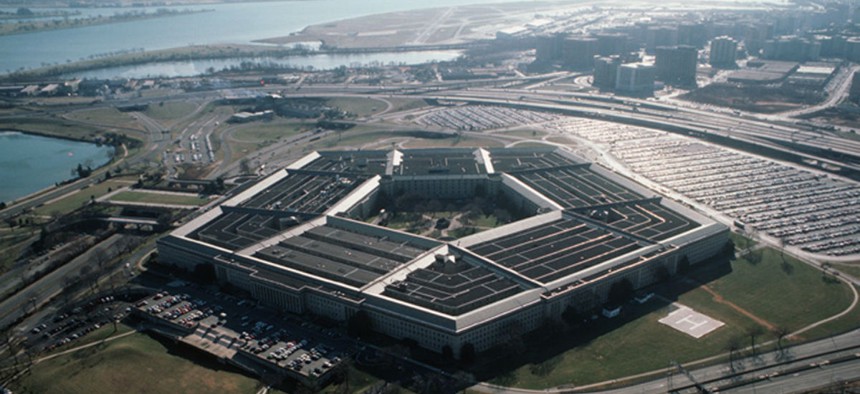Pentagon Begins Enrolling Civilians in New Personnel System
Labor and management are still working on a departmentwide, consistent rollout.
The Pentagon began evaluating thousands of employees' job performance on a new system Friday, the first step in a massive overhaul of performance management across the Defense Department.
Defense rolled out to about 14,000 employees the first phase of its New Beginnings system, which will eventually change the appraisal process for virtually all of the department’s 750,000 civilians. The initial group will serve as a pilot for a program six years in the making, and comes after some pushback from labor groups.
Congress first required Defense to create a new way to measure the performance of civilian workers when it abolished the National Security Personnel System in the 2010 National Defense Authorization Act. The law required the Pentagon to craft what became New Beginnings in conjunction with federal unions, which led to a struggle between labor and management. Representatives from the American Federation of Government Employees said Defense was not being as collaborative as it had claimed, and the department rejected many of the proposed changes drafted by “design teams” made up of union representatives and agency management.
The Pentagon settled on a three-tier performance evaluation system -- rather than the pass-fail proposal put forward by the design teams -- and at least three appraisal meetings each year between supervisors and their employees. The ratings will determine performance awards, step increases and other elements of employee evaluations.
In a February memorandum, Brad Carson, outgoing acting principal deputy secretary of Defense for personnel and readiness, called New Beginnings a “collaborative process” that will institutionalize a “culture of high performance.”
Defense has been preparing for this rollout for months, with the department holding a “train the trainers” session in January to instruct representatives from various components and activities on providing information on the new program to managers and employees. Labor and management have worked collectively on building out a website to support New Beginnings, as well as guides and tip sheets available to assist with implementation.
Still, AFGE last month asked the department to delay its April 1 launch date, saying the plan to use primarily non-union employees as guinea pigs would lead to incomplete data stemming from the program’s first phase. Defense limited the rollout to mostly non-bargaining units due to its ongoing negotiations with the labor group over implementation details.
While AFGE and the National Federation of Federal Employees have endorsed the overhaul generally, AFGE remains opposed to the timing. AFGE officials have said the department dragged its feet in putting forward its final guidance -- which it issued in February -- making it impossible for labor and management to finish negotiations before Friday’s launch.
Also, while the Pentagon issued detailed instructions spelling out specifics of the new performance evaluation system and held training sessions for employees, labor and management alike are concerned about the consistency with which the program will be installed across Defense’s wide web of branches, offices and activities.
“We didn’t put out a comprehensive enough instructional guide such to maintain the consistency we are looking for,” said Pete Randazzo, president of an NFFE local in Monterey, Calif., and a co-leader on a New Beginnings design team. “Agencies going into it aren’t getting the right message. We are already realizing the work we have ahead of us.”
Randazzo said the Pentagon and union representatives have moved into an “analysis kind of mode,” forming a “post-implementation working group” to assess the program as it kicks into gear. Part of the problem, he explained, stems from the whisper-down-the-lane nature of the rollout.
“When something leaves the Beltway,” Randazzo said, ”it’s not the same guidance” when the message gets to outposts across the country. Some initial installations, for example, have opted to put the training sessions called for in New Beginnings on the Web, while the intent was for the guidance to be delivered in person.
Getting everyone on the same page, Randazzo added, will require a financial investment from Defense. The Pentagon has to show it is “able and willing to commit the necessary resources for a successful implementation,” he said.
On Friday, the Office of the Secretary of Defense, civilian human resources at the Army and Navy, the Defense Information Systems Agency and other small offices became the first to place employees under New Beginnings. Those agencies were required to complete a readiness checklist before the launch.
Defense will roll another small group of employees into the system in October, preceding the first large swath of civilians -- hundreds of thousands of them -- joining the program in April 2017. All Defense civilians to be included in New Beginnings will join by 2018.








